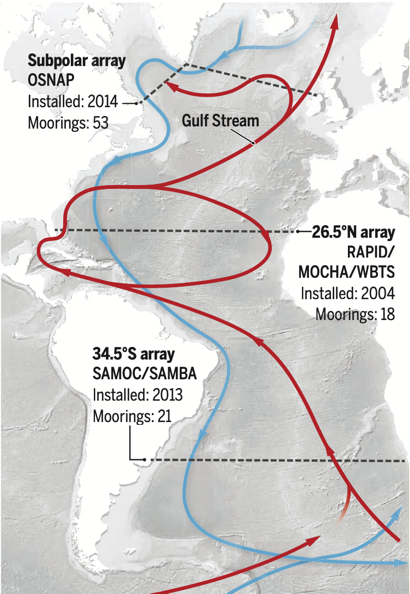Dr. Feili Li received his PhD in physical oceanography in 2014 from the University of Delaware. Shortly after he graduated, Li worked at George Mason University and then Duke University as a postdoctoral researcher. He was a senior research scientist at the Georgia Institute of Technology before joining MEL. Li joined the Department of Physical Oceanography at Xiamen University (XMU) and became a faculty member of the State Key Laboratory of Marine Environmental Science (MEL) in February 2021.
Li's research is focused on large-scale ocean circulation and its role in the climate system, especially those related to the global ocean's meridional overturning circulation (MOC). His research group's interests include: (1) overturning characteristics and dynamics; (2) the underlying mechanism of inter-basin heat and freshwater exchanges; and (3) the integration of ocean observations and ocean remote sensing data.
【Figure 1: Dr. LI Feili launches ARGO buoys on the RRS Discovery North Atlantic Voyage in 2016】
The modern ocean's MOC is manifested in the Atlantic Ocean and is known as the AMOC. The AMOC is a key component in the Earth's climate system. Its variability is believed to affect the distribution of large amounts of oceanic heat and freshwater and the global carbon cycle as well as other biogeochemical processes. As part of an internationally collaborative project, Li has been carrying out research projects on understanding the characteristics and mechanisms of the AMOC. For example, recent work based on moored records revealing the spatio-temporal structures of the subpolar AMOC elucidated the formation sites and propagation pathways of a deep density anomaly that is associated with the overturning variability, and demonstrates the weak influence of deep convective processes in the Labrador Sea on the observed variability. Another work revealed the stability of the AMOC since the 1990s based on a reconstruction of long-term AMOC variability from historical hydrographic data. By examining multiple ocean-sea ice models, a follow-up study shows possible reasons for model biases in AMOC simulations. These studies have brought new insights into our understanding of AMOC variability, calling for a comprehensive re-evaluation of the efficacy and robustness of climate model simulations of key large-scale oceanic physical processes.

【Figure 2: The Atlantic meridional overturning circulation (AMOC) mainly contains high temperature and high salt surface waters flowing from south to north (red) and low temperature and low salt deep waters flowing from south to north (blue). The dotted line in the figure represents the position of the AMOC latent beacon observation system. Image source: https://www.science.org/doi/10.1126/science.352.6287.751】
Li and his collaborators collected available historical hydrographic data at various trans-Atlantic sections to provide observation-based estimates of basin-wide heat and salinity transports through the mid- to high-latitudes of the North Atlantic Ocean and delineated relationships with the variability in ocean heat and freshwater contents. Those studies have brought new insights into the role of ocean circulation in ocean heat and sea level changes.
For more information, please visit Dr. Feili Li's website http://mel2.xmu.edu.cn/faculty/FeiliLi/, or contact him at feili.li@xmu.edu.cn.